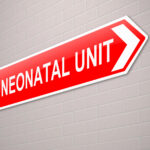- It is estimated that 40 percent of high-value homes are underinsured. Often, homeowners will only hold enough insurance to cover their mortgage or the sale price of the home, and not enough to rebuild in the event of a total loss. The mortgage or sale price of the home does not include custom work or specialty construction. Agents need to review these areas with their clients. —Bill Gatewood, director of personal lines at Burns & Wilcox
- Direct writers control about 85 percent of the high-value homeowners market. There is still a whole lot of business out there that is ripe for the picking. —Molly Rondeau, distribution sales and marketing executive at Crestbrook Insurance
- The “high-net-worth” or “affluent” consumer market is relatively small. Using the definition of home values in excess of $1 million and more than $1 million in investable assets, it includes 1.2 million U.S. households. Nearly half of these households are in more catastrophe-prone areas of the country. —Tom Ealy, president of Encompass Insurance
- Most standard homeowners policies don’t guarantee full repair or replacement in the event of a major loss. High-value home insurance typically covers these costs. If after a total loss, the insured doesn’t want to rebuild the home a standard policy would not pay out. But many high-value home policies give the equivalent of the replacement cost in cash. —Tom Ealy, president of Encompass Insurance
- Most high-value home policies provide generous, if not essentially unlimited, living expenses coverage. Most high-value home policies provide protection for back-up of sewers and drain. They also provide generous basic coverage, with options to customize higher limits, for valuable collections. —Tom Ealy, president of Encompass Insurance
- There are a lot of companies trying to get into the high-value homeowners and luxury condo markets, even in coastal regions like Florida, where it is traditionally more difficult to find capacity. —Scott Sauter, personal lines product leader for All Risks Ltd.
- Luxury condos are a popular choice among high-net-worth individuals looking for a second or seasonal home. In many cases where individuals may rent out or use these second homes for “vacation swaps,” agents need to be aware that a client is doing this. —Scott Sauter, personal lines product leader for All Risks Ltd.
- Founded in March 2014, The Private Risk Management Association (PRMA) in Palm Beach, Fla., provides education to help members better serve the high-net-worth risk management needs of their clients. Some 450 individuals representing agents, carriers and other specialists have joined PRMA. —Denise Koslowsky, principal at Advocate Brokerage Corp. and a PRMA founding member
- The culture of the high-valued market is to deliver quality products while providing personal attention. The opportunity in this niche is tremendous, but expertise is important. —Denise Koslowsky, principal at Advocate Brokerage Corp. and a PRMA founding member
- The carriers that agents work with should be able to provide training opportunities. Chubb, for example, offers classroom, online and other agency education programs. —Mary Parsons, national sales program manager for Chubb Personal Insurance
Was this article valuable?
Here are more articles you may enjoy.



 Court Awards $32 Million Over Premature Baby’s Death at Yale Hospital
Court Awards $32 Million Over Premature Baby’s Death at Yale Hospital  Trump to Issue Order Creating National AI Rule
Trump to Issue Order Creating National AI Rule  Hacking Group ‘ShinyHunters’ Claims Theft of Data From Users of Pornhub
Hacking Group ‘ShinyHunters’ Claims Theft of Data From Users of Pornhub  Insurance Industry ‘Megadeals’ Dominate 2025, Says PwC
Insurance Industry ‘Megadeals’ Dominate 2025, Says PwC 


